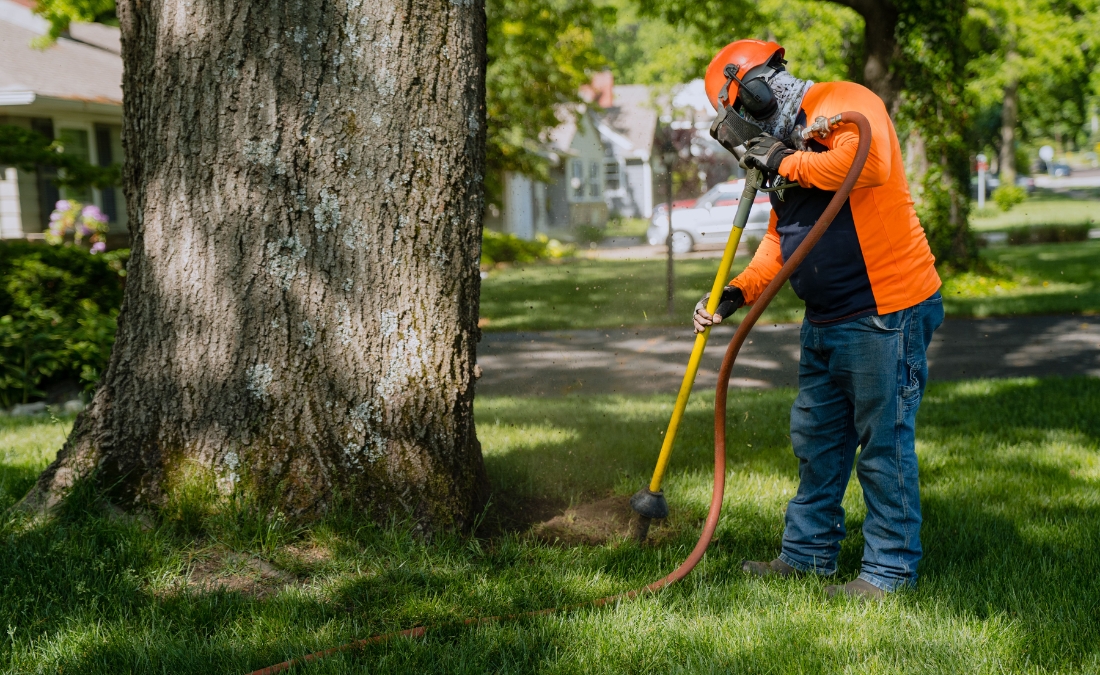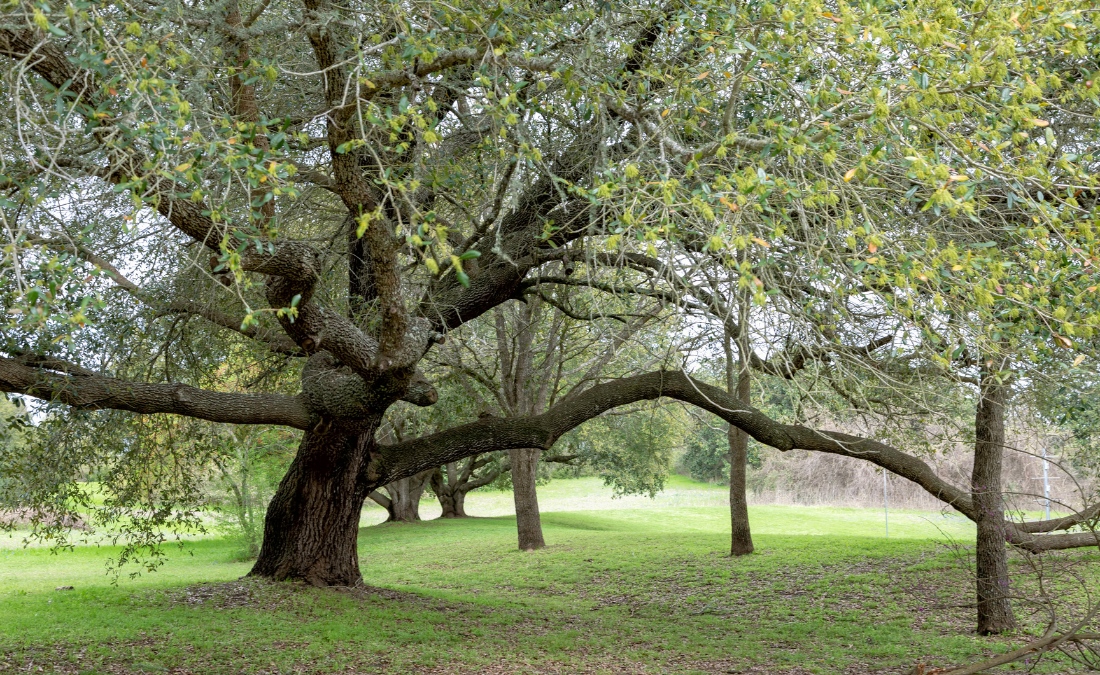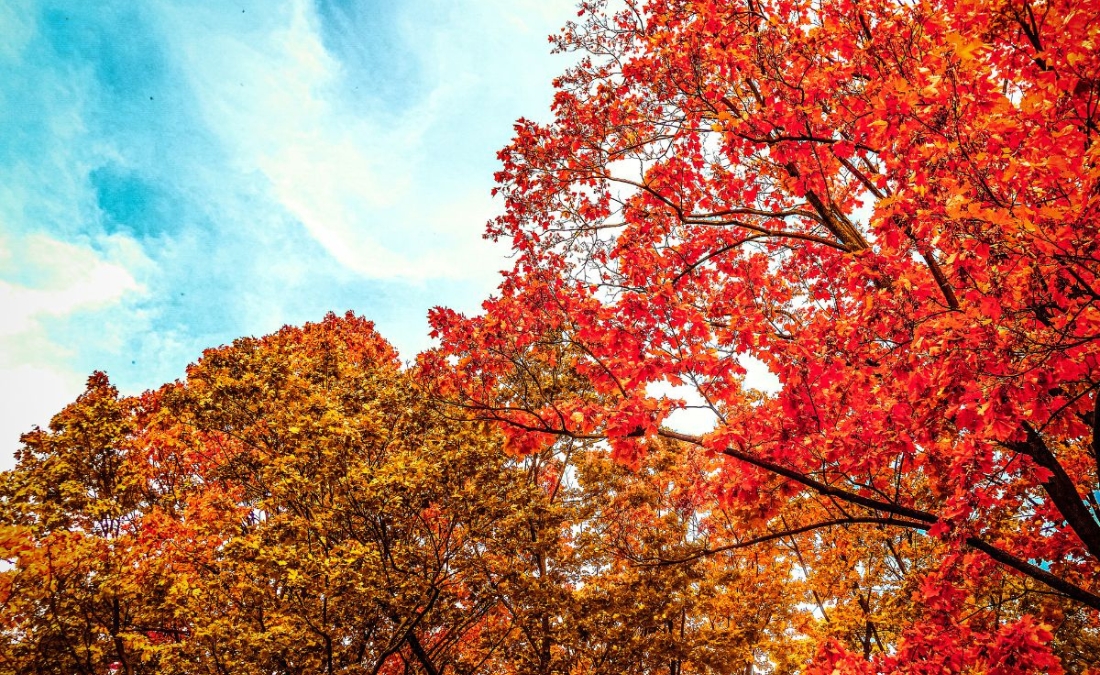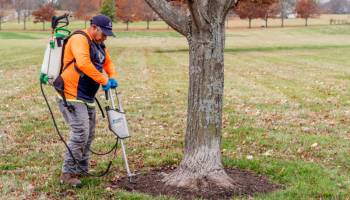Beat Fort Worth’s Summer Heat: Professional Tree Care Solutions That Actually Cool Your Property

Professional tree care solutions based on Dallas heat island research. Expert consultation and heat stress treatments help Fort Worth properties stay cooler during extreme summer temperatures.
Fort Worth homeowners are experiencing another brutal summer with heat indices reaching 103°F and daily highs consistently hitting the upper 90s. While you’re cranking up the air conditioning and watching your energy bills soar, your trees could be the key to naturally cooling your property by 10 to 15 degrees. Recent Dallas Urban Heat Island studies reveal that strategic tree care and proper canopy management can dramatically reduce ground temperatures, but only if your trees are healthy enough to provide these cooling benefits.
The problem many Highland Village, Keller, and Southlake property owners face is that their existing trees are struggling under extreme heat stress, while new plantings often fail in our cement-like summer soil. Professional tree care services designed specifically for DFW’s challenging climate can mean the difference between a tree that cools your property and one that becomes a costly liability.
Key Takeaways
- Professional summer tree health assessments can identify and prevent irreversible heat damage to valuable shade trees in Arlington and Mansfield properties, preserving their cooling capacity.
- Professional assessments, combined with proper watering techniques, are essential for sustaining trees’ cooling benefits during Flower Mound and Plano’s extreme summer conditions.
- Expert consultation helps homeowners avoid expensive mistakes in DFW’s challenging climate, ensuring any tree investment delivers maximum cooling ROI from day one
- Heat-tolerant species selection matters, but professional year-round care determines whether trees in suburban neighborhoods actually provide temperature reduction.
- Emergency heat stress interventions can save mature trees worth thousands of dollars while maintaining critical cooling canopy in Haslet and the surrounding areas.
Dallas Heat Island Research Shows Trees Can Cool Properties 10-15°F
The Dallas Urban Heat Island study conducted by the Texas Trees Foundation revealed startling temperature differences across the metroplex. Built-up areas with concrete and minimal tree coverage registered temperatures up to 12 degrees hotter than neighborhoods with significant tree canopies. In some Dallas locations, ground temperatures reached 120°F during the summer months.
This isn’t just environmental data—it’s directly impacting your property value and comfort. The study found that strategic tree placement and proper canopy management can reduce local temperatures by 10 to 15°F. According to the U.S. Environmental Protection Agency, this cooling effect can significantly reduce energy costs and improve outdoor comfort during extreme heat periods.
The Texas Trees Foundation’s comprehensive study found that Dallas is heating up faster than every city in the country except for Phoenix, making these cooling benefits more critical than ever. The National Weather Service Dallas-Fort Worth office reports that this August alone, heat indices have consistently exceeded 100°F, with some days reaching 103°F.
Unfortunately, not every tree is equipped to handle weeks of triple-digit heat. Recognizing the early symptoms of heat stress is the first step to protecting your property’s cooling canopy.
Recognizing Heat Stress Symptoms in DFW Trees
Heat stress doesn’t happen overnight, but many Fort Worth homeowners miss the early warning signs until significant damage has occurred. By the time you notice obvious symptoms like severe wilting or brown leaves, your tree may have already lost much of its cooling capacity.
Early heat stress symptoms in DFW trees include subtle leaf color changes, premature leaf drop, and reduced canopy density. You might notice leaves turning slightly yellow or developing brown edges, especially on the south and west-facing sides of the tree. Branch tips may show signs of dieback, and the overall canopy may appear less full than in previous years.
What makes heat stress particularly dangerous in our climate is how quickly it can progress. A tree showing minor symptoms in June can experience severe decline by August if the underlying stress factors aren’t addressed. Once a tree loses significant canopy cover due to heat stress, its cooling benefits are dramatically reduced—sometimes permanently.
EXPERT INSIGHT: “We see this constantly in Keller and Arlington neighborhoods. Homeowners invest significant money in mature trees, but without professional heat stress management, those trees become liabilities rather than cooling assets. The key is catching stress symptoms before they become visible damage.” – Patrick Fern, Branch Manager at Arbor Masters Fort Worth
The challenge is that many heat stress symptoms mimic other tree health issues like disease, pest damage, or root problems. Without professional training, it’s difficult to determine whether leaf browning is from heat stress, drought, soil issues, or fungal problems. Each cause requires different treatment approaches, which is why professional assessment becomes critical during extreme heat periods.
Professional Summer Assessments Preserve Cooling Benefits
When you notice potential heat stress symptoms, professional assessment becomes your best tool for preserving your trees’ cooling capacity. Our ISA Certified Arborists can detect early heat stress indicators that predict serious problems weeks or months before they become visible damage, allowing for interventions that maintain your property’s natural cooling system.
Professional summer assessments evaluate root zone moisture, soil compaction, canopy density, and heat stress indicators that determine whether your trees can continue providing cooling benefits through extreme weather periods. We use specialized equipment to measure soil moisture at various depths and assess root health without damaging the tree.
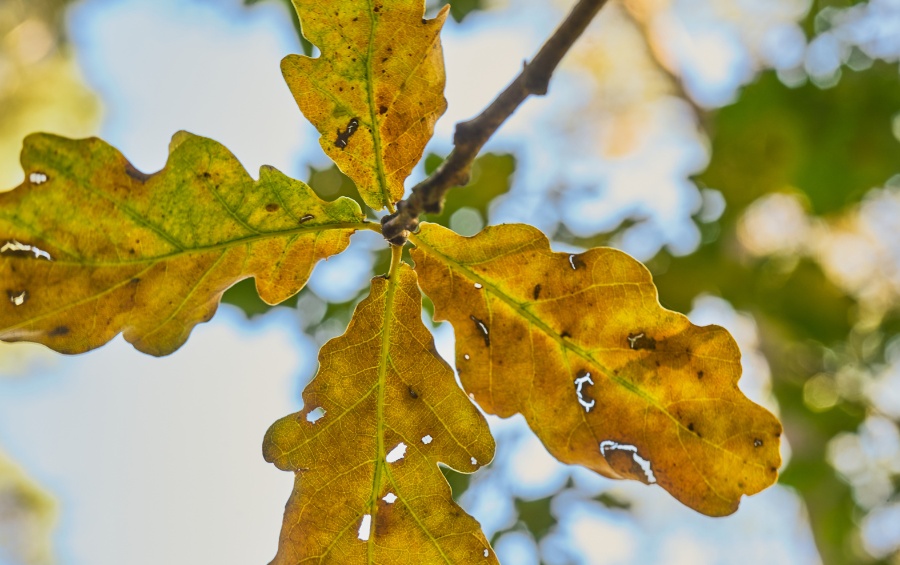
Heat stress symptoms like browning leaf edges and yellowing are early warning signs that require professional assessment.
What Professional Assessment Reveals
Our comprehensive evaluations often reveal that seemingly healthy trees are actually operating under significant stress that will soon compromise their cooling effectiveness. For example, trees in Keller and Southlake neighborhoods frequently show signs of drought stress even when homeowners think they’re watering adequately.
CASE STUDY: “Last summer, we assessed a Southlake property where the homeowner was watering daily but still losing trees. Our evaluation revealed that surface watering wasn’t reaching the root zone due to soil compaction. After implementing proper techniques based on our assessment, those trees not only survived but increased their cooling capacity significantly.” – Kelly Paniagua, Arbor Masters Fort Worth ISA Certified Arborist
Emergency vs. Preventive Assessment
Emergency assessments become necessary when trees show obvious distress such as wilting during morning hours, sudden leaf drop, or branch dieback. However, preventive assessments conducted before visible symptoms appear are far more effective at preserving cooling benefits and cost-efficient for homeowners.
Our preventive assessment program identifies trees at risk before they lose cooling capacity, allowing for interventions that maintain property value and comfort. This approach is especially valuable for mature trees in Highland Village and Haslet, where replacement costs can be incredibly expensive. Understanding proper pruning techniques and timing is also essential for maintaining tree health during extreme heat periods.
Proper Watering Techniques Restore Cooling Capacity
One of the biggest insights from our assessments is how often watering practices are doing more harm than good. Many Fort Worth area homeowners think they’re watering adequately but are actually contributing to heat stress through improper techniques that compromise their trees’ cooling effectiveness.
Surface watering during extreme heat can create additional humidity around the tree base, promoting fungal diseases and increasing stress rather than relieving it. Meanwhile, inadequate deep watering leaves roots parched even when the surface appears moist, leading to gradual decline in cooling capacity.
Assessment-Driven Watering Strategies
Our ISA Certified Arborists evaluate soil conditions, drainage patterns, and individual tree needs to recommend specific watering schedules and techniques that actually help rather than harm cooling capacity. This assessment-driven approach is especially critical during periods when air temperatures exceed 95°F and soil temperatures reach dangerous levels.
For Flower Mound and Arlington properties, we provide detailed watering recommendations based on soil type, tree species, and microclimate conditions. These recommendations often differ significantly from general gardening advice because established trees have different moisture needs than newly planted specimens, and cooling effectiveness depends on proper root zone hydration.
EXPERT INSIGHT: “We often find that homeowners in Keller and Southlake are overwatering at the wrong times or underwatering when trees need it most. Our assessments provide specific guidance that helps trees actually benefit from watering efforts and maintain their cooling benefits rather than struggling despite them.” – Getth Nelson, Arbor Masters Fort Worth ISA Certified Arborist
Comprehensive Heat Stress Treatment
Our Plant Health Care services for extreme heat include comprehensive treatments that address the multiple factors affecting tree cooling capacity during temperature extremes. While proper watering is one component, professional heat stress management also includes soil health evaluation, canopy assessment, and targeted treatments that strengthen trees’ natural heat tolerance.
These professional interventions work in conjunction with proper watering to maintain tree health and cooling capacity even during the most challenging weather conditions. The combination of expert assessment and appropriate care techniques provides cooling results that watering alone cannot achieve. For homeowners dealing with extreme summer stress on their trees, professional plant health care programs offer the best chance of preserving valuable cooling benefits.

Healthy trees with full canopies filter intense sunlight and provide natural cooling for Fort Worth properties.
Frequently Asked Questions
How quickly can professional tree care reduce my property’s temperature?
Existing healthy trees provide immediate cooling benefits, but trees recovering from heat stress may need 4 to 6 weeks of professional treatment to restore full cooling capacity. New plantings typically require 2 to 3 years to provide significant temperature reduction, which is why we focus on maintaining existing trees whenever possible.
What’s the difference between emergency tree service and preventive heat stress treatment?
Emergency service addresses trees showing severe heat stress symptoms like extensive wilting or branch dieback. Preventive treatment includes professional assessment and care recommendations that address stress factors before visible symptoms appear, which is more effective and cost-efficient. Emergency interventions can save trees but may not fully restore their cooling capacity.
How do I know if my trees are providing cooling benefits or just taking up space?
Professional assessment can evaluate your trees’ cooling effectiveness through canopy density analysis, leaf area evaluation, and temperature monitoring around the tree. Our arborists also provide specific watering and care recommendations to maximize cooling potential. Healthy trees should provide noticeable shade and temperature reduction during morning and afternoon hours.
What’s the cost difference between maintaining existing trees versus replacing them?
Maintaining mature trees through professional heat stress programs costs significantly less than removal and replacement. A single mature tree replacement in our service area can cost thousands of dollars, while annual maintenance programs preserve existing cooling assets at a fraction of that cost.
Can professional tree care really reduce my energy bills during DFW summers?
Yes, properly maintained trees that provide 10 to 15°F of cooling around your home can reduce air conditioning costs by 15 to 25% during peak summer months. The energy savings often offset the cost of professional tree care within 2 to 3 years while providing ongoing comfort and property value benefits. The U.S. Department of Energy confirms that strategic landscaping with healthy trees can significantly reduce home energy consumption.
I want to plant a new tree. What are some heat-tolerant species to consider in DFW?
Native Texas species like live oak, Texas red oak, and cedar elm have natural heat tolerance and should thrive in your yard. But their ability to thrive and provide cooling for your home depens on their root health, proper watering, and stress management.
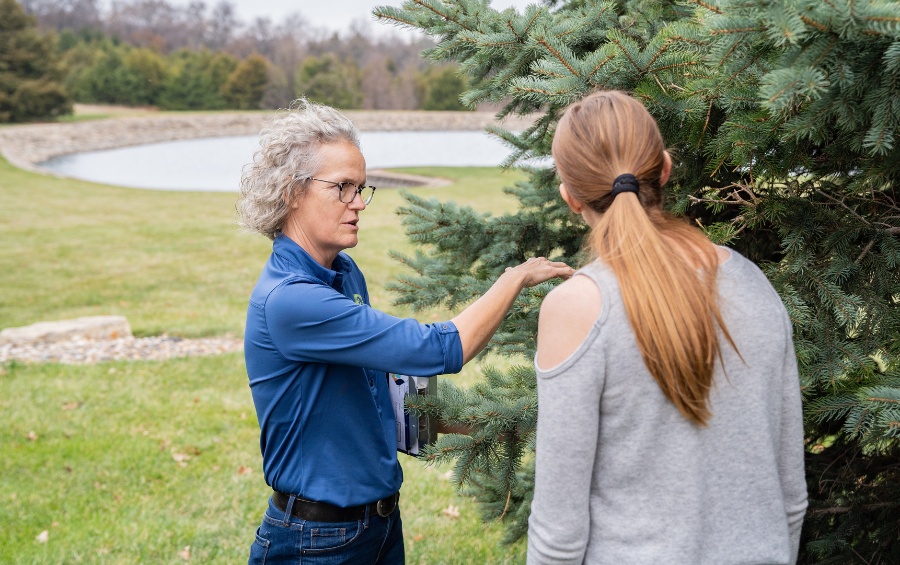
Professional Tree Care That Actually Delivers Cooling Results
The connection between professional tree care and property cooling isn’t theoretical. It’s measurable and immediate. Dallas heat island research proves that healthy, properly maintained trees can reduce your property’s temperature by 10 to 15 degrees, but only when those trees receive the specialized care needed to thrive in our extreme climate.
Arbor Masters’ ISA Certified Arborists understand the unique challenges that DFW trees face during extended heat periods. Our consultation-first approach ensures that every tree care decision supports your property’s cooling goals while avoiding costly mistakes that waste money and time.
Don’t let another summer pass with struggling trees that can’t provide the cooling benefits you need. Call Arbor Masters at (469) 586-5829 to schedule your professional summer tree assessment. Our Certified Arborists serve the entire Dallas-Fort Worth region with expert tree care services designed to keep your property cool and comfortable all summer long. Limited availability during peak season. Call today to secure your consultation.

Get the latest local news, tree care tips, special offers, and company updates directly to your inbox! It's easy to subscribe and there's no spam - we promise.
"*" indicates required fields

